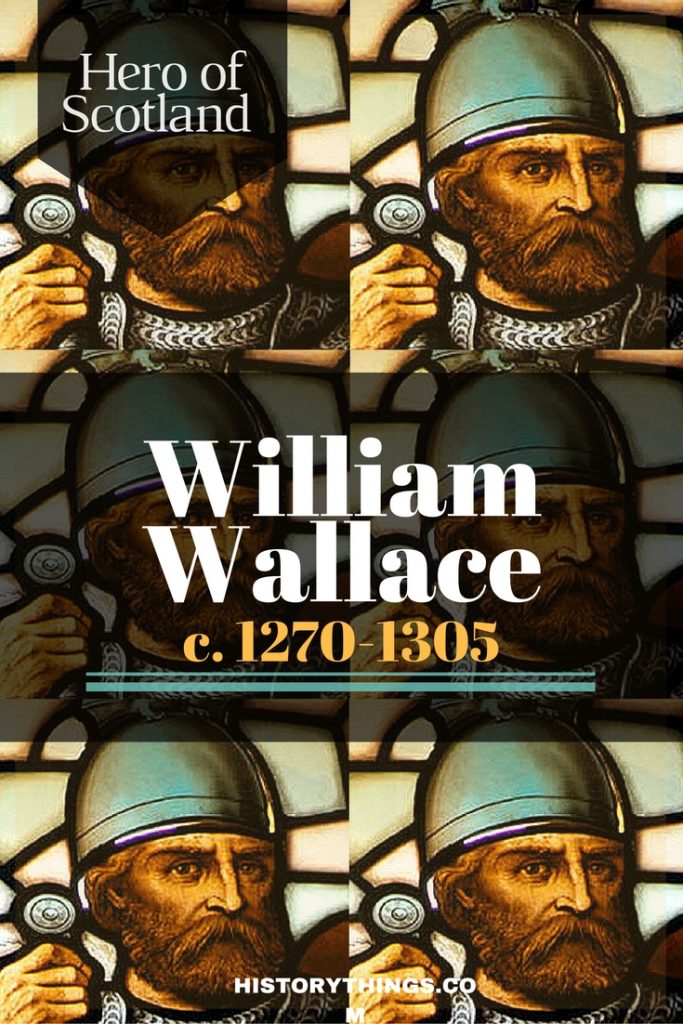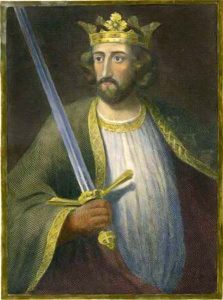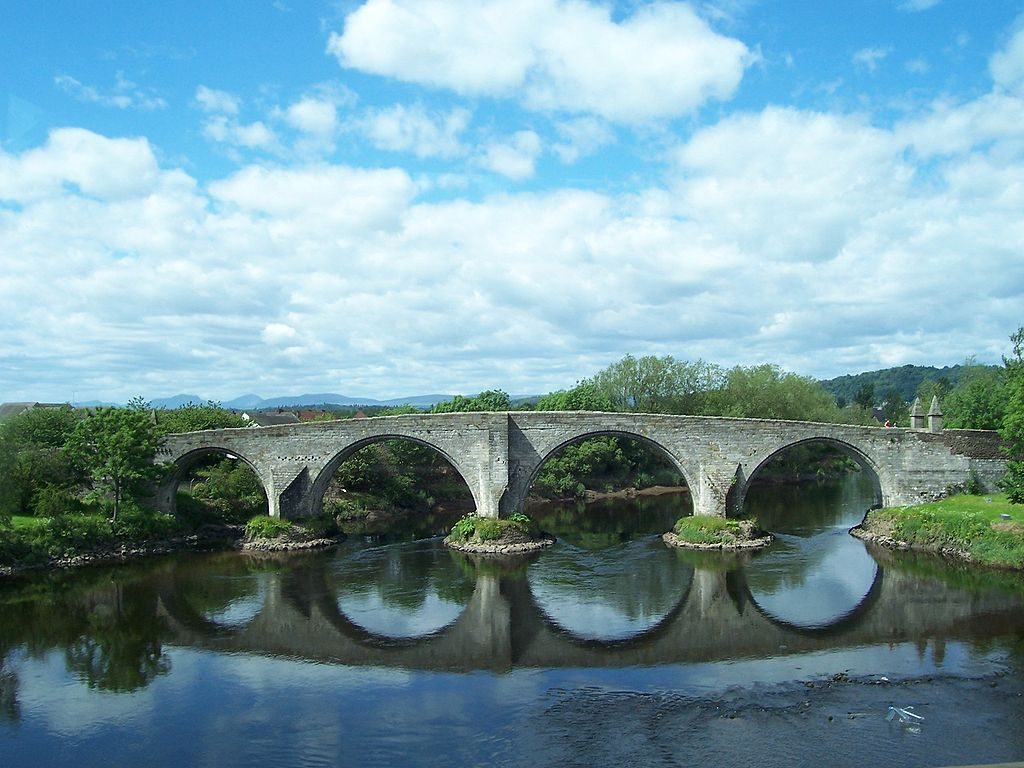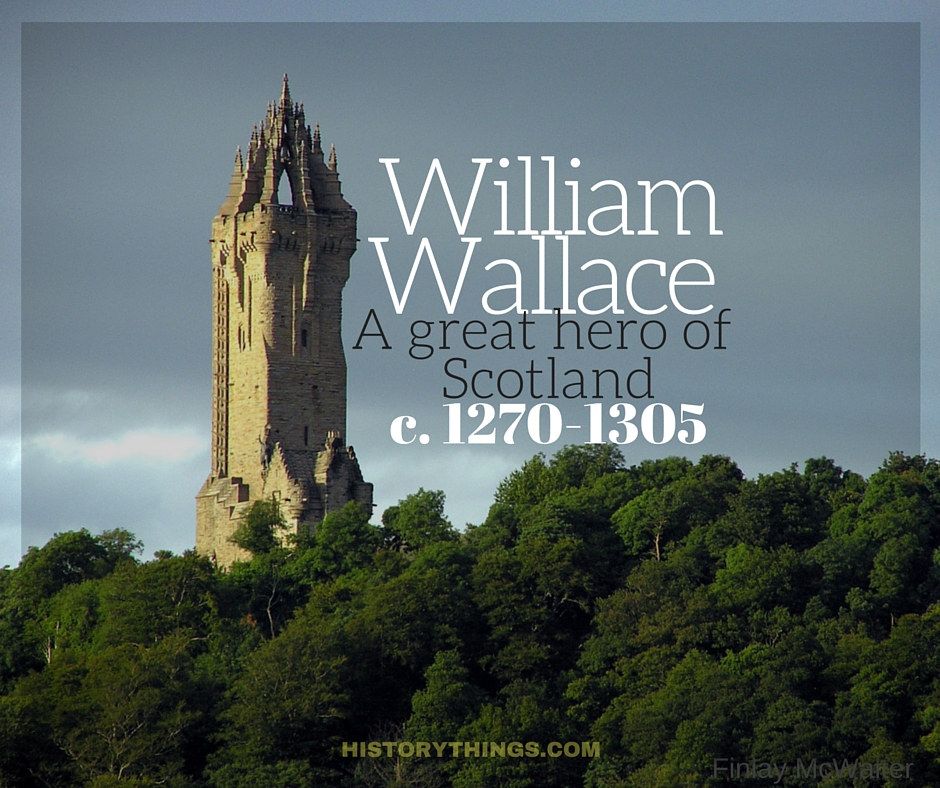“I could not be a traitor to Edward, for I was never his subject.”
– William Wallace
Last week, on History’s Badasses, we covered Joan of Arc, the young French maiden who, at just sixteen years of age, believed she was sent by God to liberate France from the English. She rode at the head of French armies and was able to secure several French victories, but was eventually captured by England and burned at the stake for heresy and witchcraft.
This week, we’re covering Scottish nobility and claymore-wielding badass, William Wallace, who spearheaded the Scottish revolt against the tyrannical English rule of Scotland in the late 13th century. While he would be later captured and brutally killed, he was upheld as a martyr, and the Scottish rebels would continue the fight after his death and eventually gain their independence.
Historical Background and Early Life
 William Wallace was born around 1270 to Scottish landowner. He grew up as a member of lesser Scottish nobility. Not much is really known about his parentage or his early life, but some historians have questioned whether or not he fought in the early wars on the side of the English as an archer against the Welsh. He certainly had to get his military and strategic prowess from somewhere.
William Wallace was born around 1270 to Scottish landowner. He grew up as a member of lesser Scottish nobility. Not much is really known about his parentage or his early life, but some historians have questioned whether or not he fought in the early wars on the side of the English as an archer against the Welsh. He certainly had to get his military and strategic prowess from somewhere.
When he was growing up, King Alexander III ruled Scotland under a period of peace and economic stability. But, when Alexander died on March 19, 1286, after falling off his horse, that period of stability abruptly ended.
His granddaughter, Margaret, Maid of Norway, was supposed to be heir, but she was still just a kid, and from Norway, so Scotland instead fell to the rule of several guardians (members of Scottish upper nobility). The problem only got bigger when, on her voyage to Scotland, Margaret got sick and died on September 26, 1290.
The tension in Scotland skyrocketed. Scottish lords were vying for the throne. Civil war brewed on the horizon.

Painting of King Edward I [PHOTO: skepticism.org]
Well, as you can imagine, that didn’t go over very well with Scotland. Instead, the Guardians declared Scottish noble, John Balliol, to have the strongest ruling claim by law. Edward was so angry about this that he took away the rulings of several Scottish lords and summoned Balliol to court with a common judge!
Unfortunately, John was a weak king. He did nothing when Edward stormed a Scottish border town, and, in April of 1296, the Scots were defeated by the English in the Battle of Dunbar. By July, Edward forced John to abdicate and declared himself King of Scotland.
For a while, the Scottish quietly submitted to English rule, but then William Wallace emerged on the scene as a man that Walter Bower described as, “a tall man with the body of a giant … with lengthy flanks … broad in the hips, with strong arms and legs … with all his limbs very strong and firm”. This big guy didn’t think the English had any business ruling Scotland, so he picked up his bow, shouldered his claymore, and began planning a rebellion.
The War Against the English
![Statue to William Wallace in Aberdeen [PHOTO: wikimedia]](https://historythings.com/wp-content/uploads/2016/08/1024px-William_Wallace_Statue__Aberdeen2-1024x754.jpg)
Statue to William Wallace in Aberdeen [PHOTO: wikimedia]
Wallace was not the only one unhappy with English rule. Several other lords were running their own rebellions. They were drawn to this powerfully-built, clever, enigmatic man, and later, Wallace was joined by William the Hardy, Lord of of Douglas. Their armies joined forces and raided Scone.
Stirling Bridge
William Wallace was a master strategist and opportunist. He knew Scotland very well, an advantage that the English generals didn’t have, and he used that against them. On September 11, 1297, an army led by William Wallace and Andrew Moray fought the battle of Sterling Bridge against impossible odds.
Stirling Bridge was very narrow, and only a small amount of soldiers could cross at any given time. Even though the Scottish were horribly outnumbered, Wallace knew it wouldn’t be a problem. The English numbers didn’t intimidate him. He ordered his men to cross the river and wait for the English on the other side of the bridge.
The English were forced to either use the bridge to get to him, or cross the rushing water. Neither was ideal. Each English man that attempted to wade through the water was picked off by Wallace’s archers, and the men that crossed the bridge were effectively bottle-necked. The Scottish held their ground and scored a major victory, eventually pushing the English into retreat.
After the battle, Wallace was knighted at Selkirk by a Scottish earl and assumed title of Guardian of the Kingdom of Scotland.
He would spend the winter organizing raids on English supply lines, picking off the soldiers one by one, and melting into the Scottish countryside. The English could only fight him if they could find him.
Battle of Falkirk
By April of 1298, King Edward decided some reinforcements were in order. He ordered a second invasion of Scotland with almost 26,000 fresh infantry and 1500 cavalry. The English swarmed the Scottish countryside. They regained several castles, but even with their numbers they failed to get Wallace in combat. He was too smart for that. He knew his smaller, less well-equipped army was no match for the new English one. Instead, he shadowed them and picked off supply lines and pared them down to size, soldier by soldier.
The months dragged on. The English still failed to capture Wallace, and they hadn’t anticipating the war taking this long. Supplies and morale ran low. So low, in fact, that at one point Edward’s own army rioted and had to be put down by his cavalry.
The winds changed when Edward got word that Wallace and his army were quartered nearby at Falkirk. Finally, he could get the open battle that he wanted. Edward launched an attack on Wallace at Falkirk within the week.
Even from the start, William was doomed to fail. His army was quickly surrounded by the English, and his lighter cavalry was no match for the English heavy horse. The Scottish lost, and lost badly at Falkirk that day. Several generals were captured, but Wallace managed to escape in the nick of time.
He would not be daunted by defeat, though, and by 1304, he was back and fighting for Scottish independence. He worked through the year, and even acted as an envoy to France and manged to gain French support for the Scottish rebellion.
Death and Legacy
Unfortunately for Wallace, the French turned against the Scots later that year. Scotland couldn’t fight both England and France, and the Scottish lords, without consulting Wallace, caved in and capitulated to the English army and recognized Edward as their King in 1304.
William Wallace would not submit, though. He remained elusive and carried out several more raids until he was pursued and caught by Edward’s men on August 5th.
They captured him near Glasgow, then took him to London and condemned as a traitor. When the English asked him about how he felt about the charge, he merely responded: “I could not be traitor to Edward, for I was never his subject”.
That year, Edward sentenced William Wallace to a brutal death. He was hanged, disemboweled, beheaded, and quartered. His head was then preserved in pitch and speared on a pike above London Bridge. His limbs were displayed separately in Newcastle, Berwick, Stirling, and Perth.
After his death, the Scottish viewed William Wallace as a martyr and many resolved to finish what he started in honor of him. The Scottish rebels would continue fighting, and Scotland would gain its independence 23 years later, with the Treaty of Edinburgh in 1328.
Wallace has been forever remembered as one of Scotland’s most badass heroes of all time.




